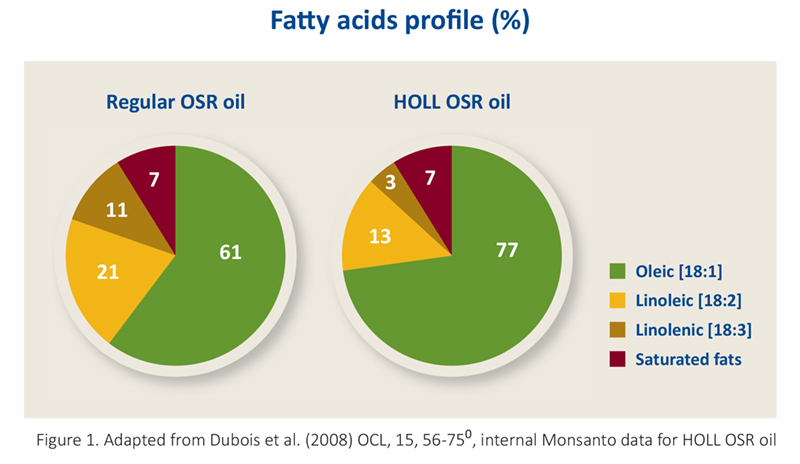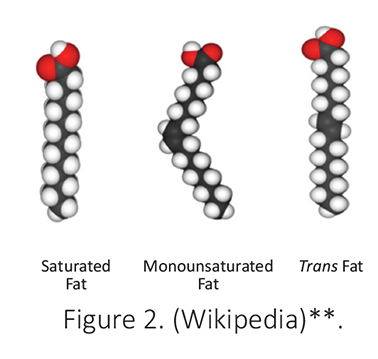
Improved fatty acid profile in HOLL OSR Oil
27-Apr-2016
Compared to regular OSR (Oilseed Rape) oil the HOLL OSR oil shows an increase in oleic acid content of 26% (> 75%) and has reduced linolenic content to less than 3,5% (Fig. 1).

HOLL OSR oil has higher amount of oleic acid and less polyunsaturated acids than regular OSR oil (Fig. 3). These changes lead to an improved frying performance compared to regular OSR oil.

- These changes lead to an improved frying performance compared to regular OSR oil.
Double bonds introduce a bend in the hydrocarbon chain of unsaturated fatty acids, which makes it more difficult for them to pack tightly. On the contrary, in saturated fatty acids, with no bends, the fatty acids can pack closely, which make them often solid at room temperature.
Partial hydrogenation is the process that adds hydrogen atoms to unsaturated oil, making the fat more solid and stable but creating trans fats, which are suggested to be harmful to health.
**Source of molecular models picture:
Saturated fat: https://commons.wikimedia.org/wiki/File:Myristic-acid-3D-vdW.png
Monounsaturated fat: https://commons.wikimedia.org/wiki/File:Oleic-acid-3D-vdW.png
Trans fat: https://en.wikipedia.org/wiki/Trans_fat#/media/File:Elaidic-acid-3D-vdW.png


